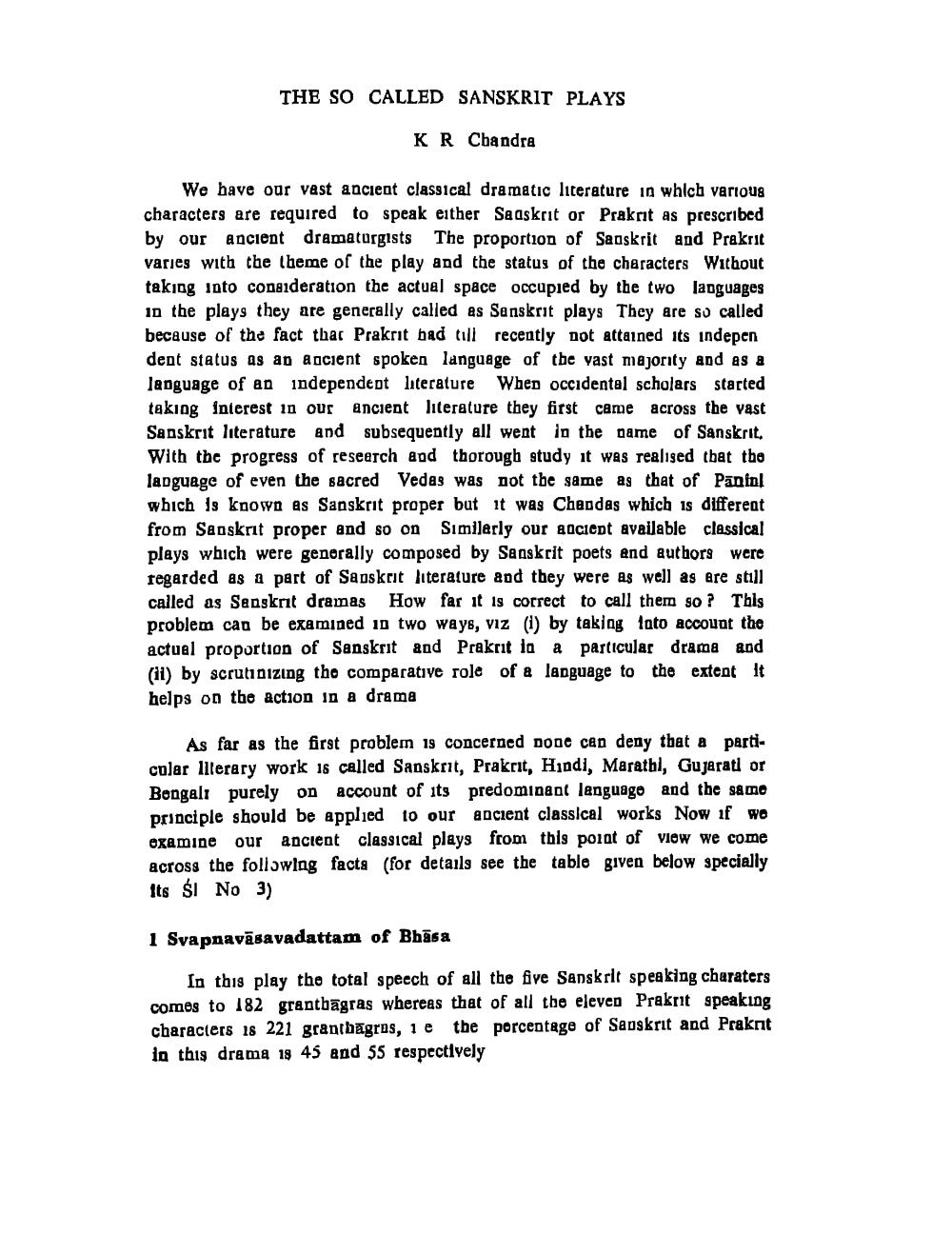________________
THE SO CALLED SANSKRIT PLAYS
K R Chandra
We have our vast ancient classical dramatic literature in which various characters are required to speak either Saaskrit or Prakrit as prescribed by our ancient dramaturgists The proportion of Sanskrit and Prakrit varies with the theme of the play and the status of the characters Without taking into consideration the actual space occupied by the two languages in the plays they are generally called as Sanskrit plays they are so called because of the fact that Prakrit bad till recently not attained its indepen dent status as an ancient spoken language of the vast majority and as a language of an independent literature When occidental scholars started taking interest in our ancient literature they first came across the vast Sanskrit literature and subsequently all went in the name of Sanskrit With the progress of research and thorough study it was realised that the language of even the sacred Vedas was not the same as that of Panin! which is known as Sanskrit proper but it was Chandas which is different from Sanskrit proper and so on Similarly our ancient available classical plays which were generally composed by Sanskrit poets and authors were regarded as a part of Sanskrit literature and they were as well as are still called as Sanskrit dramas How far it is correct to call them so ? This problem can be examined in two ways, víz (1) by taking tato account the actual proportion of Sanskrit and Prakrit la a particular drama and (11) by scrutinizing the comparative role of a language to the extent It helps on the action in a drama
As far as the first problem is concerned done can deny that a particolar literary work is called Sanskrit, Prakrit, Hindi, Marathi, Gujarati or Bengalı purely on account of its predominant language and the same principle should be applied to our ancient classical works Now if we examine our ancient classical plays from this point of view we come across the following facts (for details see the table given below specially Its Si No 3)
1 Svapnavāsavadattam of Bhāsa
In this play the total speech of all the five Sanskrit speaking charaters comes to 182 grantbāgras whereas that of all the eleven Prakrit speaking characters 18 221 grantbāgrus, ie the porcentage of Sanskrit and Praknit in this drama is 45 and 55 respectively




